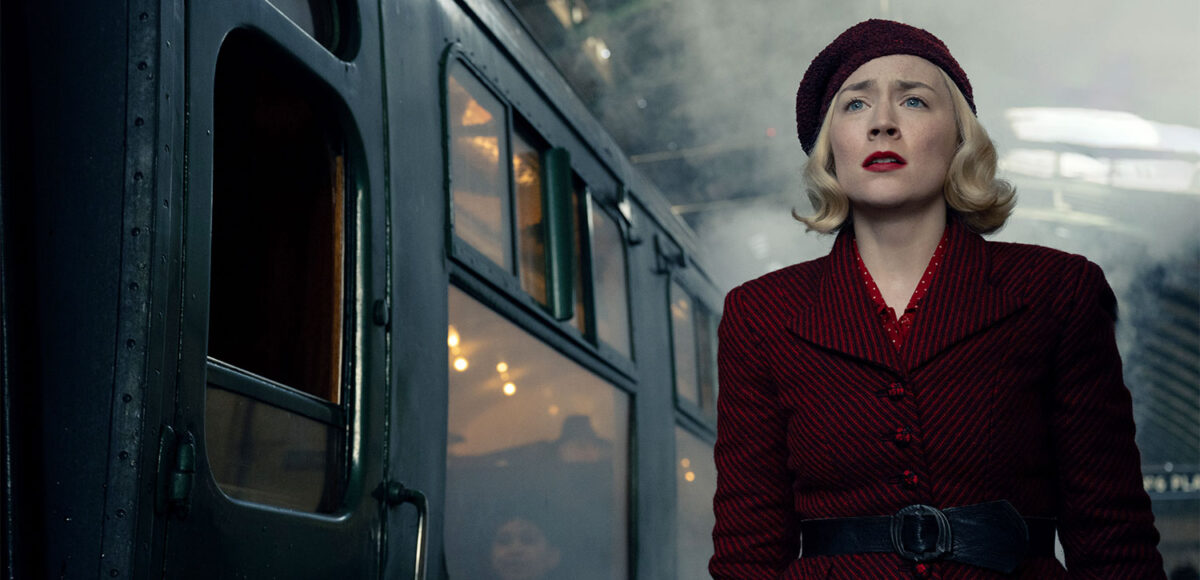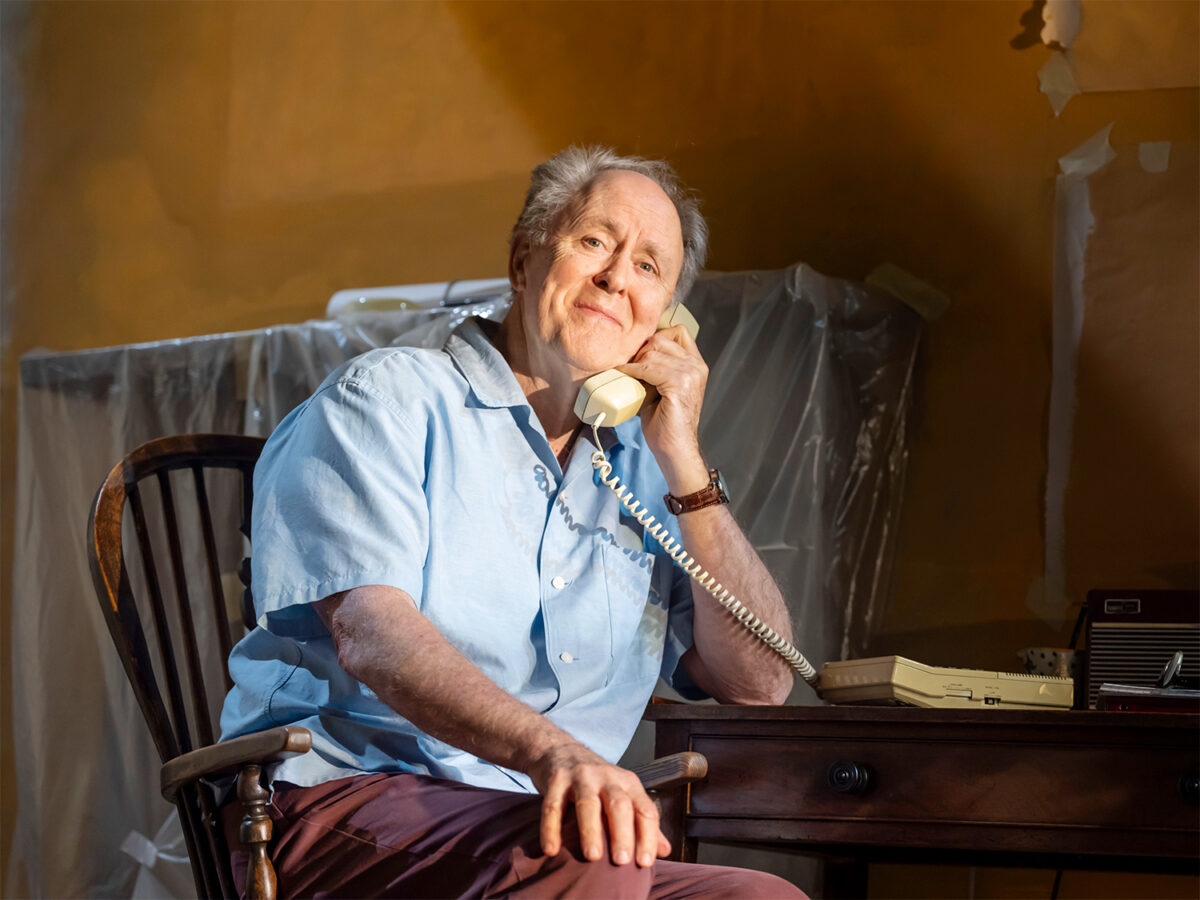The bombs are dropping; the sound is deafening; the fires are spreading and the firefighters are engulfed. Thus opens the extraordinary new film by Steve McQueen, “Blitz,” a sequence that is riveting, terrifying, and as close as anyone can come to being in the middle of an attack. Your stomach will tighten; you’ll want to close your eyes and deaden the sound, but you can’t because this surround sound experience is mesmerizing. It’s 1940 in London and the Germans have targeted English cities, randomly bombing residential as well as industrial sites, causing havoc with the almost warningless attacks. Whole blocks are destroyed, and rubble fills the streets. This was a blitzkrieg, a lightning war, dubbed “the Blitz” by the Brits. Its object wasn’t just to destroy but also to destabilize, and it was successful on all counts. It’s an amazingly frightening opening that leads into what is the touching and gripping love story of a mother for her child.
Fearing for the children living in London, an evacuation was hastily put together to send youngsters out of the big city and transport them by train to safer villages away from the bombing targets. Rita, a factory worker and single mom, lives with her father and her 9-year-old biracial son, George, who could not be more loved or supported by his mother and grandfather. They have raised him to be strong and fair and independent; to stand up to bullies and defend himself when necessary. As his grandfather tells him, “Bullies are all mouth and no trousers.” Torn between her need to have George with her, she is, nevertheless, insistent that he join the evacuation, something he does not want. She unclasped her St. Christopher’s necklace, the last vestige of her long-gone husband and George’s father and puts it around his neck. Yelling, crying, and shouting he hates her, Rita drags him to the train and makes sure he gets on. George wants none of it. The strangers are unfriendly; he’s different; he wants his family. As the train pulls away, you are as wrenched as George is.
Rita is a factory worker. Surrounded by friends, they commiserate about the dangers around them but all are eager to find fun and companionship in the turmoil. Rita is conflicted. Reluctant to be pulled from her shell, all her thoughts are with George and his last hateful words to her. Her guilt and ambivalence are playing havoc with her psyche. Life will soon become more complicated and amidst the constant threat of destruction and paltry number of shelters, Rita tries to help those in need. She is unaware that she could soon be one of them.
Faced with bullies ridiculing him because of his race and a support system not designed for people like him, George, a truly intrepid soul, makes a daring escape from the train, determined to make his way back to his mother and grandfather. He cannot let his last words to his mother be “I hate you.” During his Quixotic trip, he will face an amazing array of dangers, learning that sometimes it’s difficult to tell the bad guys from the good as he starts on his incredible journey. When Rita is informed that George did not disembark with the other children and that one child reported his heroic jump from the moving train, she is hysterical. Walking out on her job, dropping everything, she begins her impossible quest to rescue George. He knows where he must end up but may not have the means to do so, other than his dogged determination. She, on the other hand, is at a marked disadvantage, searching for a needle in a massive haystack.
McQueen, both as writer and director, gives us a thrilling mother-son love story couched within the horrors of war, perfectly illustrating the concept that joy can be found even within the most profound tragedies. It is certainly an excellent depiction of the so-called British “stiff upper lip” personality while also showing the subliminal racism and misogyny that continued to flourish even while most were trying to pull together.
That at times McQueen inserts too many side issues or minor plotlines is forgivable considering the overall emotional impact of the film. His depiction of the patronizing attitude of men in power over women in the factory, women on whose labor the defense machine must rely, is subtle but effective. He becomes a bit more heavy-handed when it comes to issues of racial prejudice, painting with black and white and neglecting nuance and shades of gray, forgetting, perhaps, that it is those shades of gray that are the most dangerous. The audience is intelligent enough to make the connection between a color-based slight as directed at George by his peers and what he and others face day to day. Racism is everywhere. He is most effective with a line of dialogue here or a nasty look there, and less effective when illustrating prejudice with physical assaults against victims of color.
McQueen’s brilliance is evidenced in the way he envelopes you in the terrifying sounds and randomness of the bombing. Juxtaposed by the tender love story he tells of George and Rita; the audience immediately understands the stakes. The randomness of the bombing only heightens the probability of loss.
McQueen won the Turner Prize for Visual Art in 1999 and an Academy Award for “Twelve Years a Slave” in 2014. His cinematographer, Yorick Le Saux, boldly brings that artistry to life as he paints his picture of London. The superb cast is the successful handmaiden to the director and his vision and artistry. Paul Weller as George’s grandfather is quietly effective as one of the roots of George’s backbone. Benjamin Clémentine is a breath of hope as Ife, the air raid warden who briefly takes George under his wing. Stephen Graham, Albert, adds this role to his many other scene-stealing villains, this time a bad guy of Dickensian proportions. He makes an indelible impression not just for the danger he represents but for the randomness of his insertion into George’s life.
There are few accolades that Saoirse Ronan (Rita) hasn’t rightfully received. Here, her mother is so realistically portrayed that you live with her as she follows the well-worn path in the life she has accepted. It is not until she realizes that her child is missing and she breaks down that you begin to understand how thoroughly she has wrapped you in her life. She is us and we are her as she faces a terror for which she was unprepared.
“Blitz,” however, rises or falls on the performance of Elliott Heffernan, the extraordinary child who is George. Discovered in a nationwide open casting call, Heffernan is quiet, effective, effortless and real in a role that calls for him to be brave, hurt, mentally and physically, and lovingly show the unbreakable bond he has with his mother and grandfather. There is nothing showy about his George. This is a real kid. He could be yours or mine, and that’s what makes his dilemma so personally agonizing. He makes you care; he makes you root for him; he makes you afraid for what may happen. Surrounded by professionals, it is on him, nevertheless, that the whole film hinges and its success depends. Gloriously, he’s terrific and the film succeeds beyond what anyone has a right to hope for. “Blitz” is the must-see film of the season.
Now playing at the Landmark Sunset and the Laemmle Town Center and streaming on Apple Nov. 22.
Neely Swanson spent most of her professional career in the television industry, almost all of it working for David E. Kelley. In her last full-time position as Executive Vice President of Development, she reviewed writer submissions and targeted content for adaptation. As she has often said, she did book reports for a living. For several years she was a freelance writer for “Written By,” the magazine of the WGA West, and was adjunct faculty at USC in the writing division of the School of Cinematic Arts. Neely has been writing film and television reviews for the “Easy Reader” for more than 10 years. Her past reviews can be read on Rotten Tomatoes where she is a tomato-approved critic.







